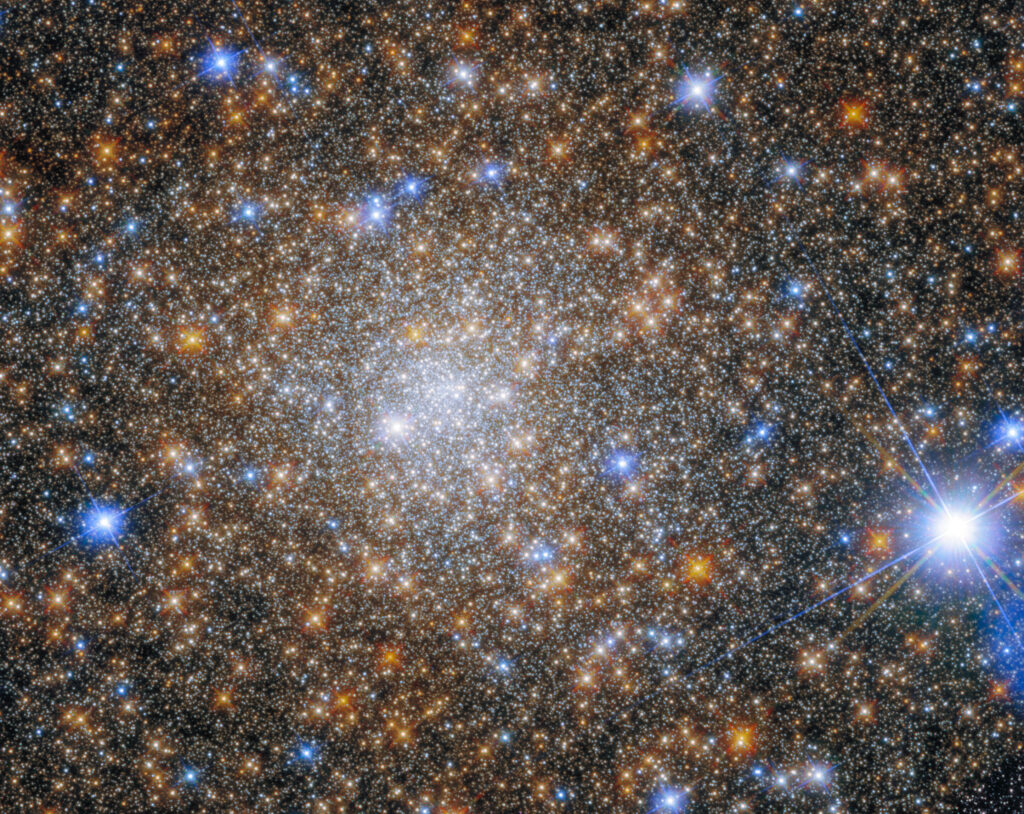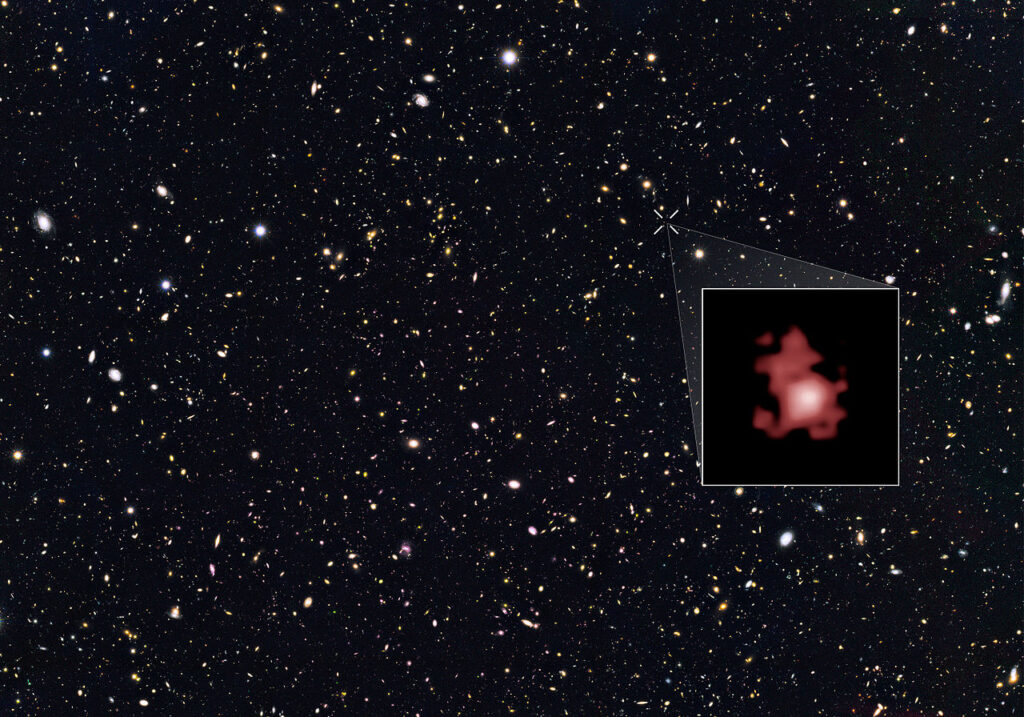The James Webb Space Telescope (JWST) has found evidence of the existence of giant stars in the early Universe, their mass thousands of times greater than the solar one. Such information is provided in an article published in a recent issue of the journal Astronomy and Astrophysics.
Chemical anomalies in globular clusters
The discovery was made during the study of globular clusters — dense and closely related spherical groups of stars that orbit the galactic center as a single satellite. They can number from several tens of thousands to a million participants and are among the oldest objects in the Universe, having an age comparable to the epoch of the appearance of the first galaxies. Therefore, astronomers often use them as a kind of window into the past to study the earliest years of our Universe.

Researchers have long been interested in the question of why stars in some clusters contain different amounts of chemical elements, although in theory they are formed at the same time from the same matter. A possible explanation lies in the existence of giant stars in the early Universe, much larger in size and mass than the current luminaries. It is believed that their mass could exceed the mass of our Sun by 10 thousand times.
In the depths of these giant stars, much higher temperatures were maintained, which allowed them to produce heavier elements. After their death, their matter “polluted” smaller luminaries, some of which have survived to the present day.

Certainly, these giant luminaries could be formed only at an early stage of the existence of the Universe, the conditions in which were very different from modern ones. Those days are long gone, and with them the era of giant stars. All that remains for astronomers to do is to look for chemical traces left by them.
The most distant galaxy in the Universe
In search of such traces, scientists aimed JWST at the galaxy GN-z11. This is one of the most distant and ancient galaxies known to astronomers. We see it as it was just 440 million years after the Big Bang.

Spectral analysis of GN-z11 revealed an unusually high ratio of oxygen and nitrogen. According to the researchers, such a high concentration can be explained by the combustion of hydrogen at extremely high temperatures, which is possible only in the cores of giant stars.
Another possible solution to the problem of nitrogen abundance in GN-z11 is a by-product of the activity of second-generation Wolf-Rayet stars, which shed their outer layers for a long period. But, given the age of GN-z11, this seems unlikely.
Earlier we talked about how JWST proved the possibility of the formation of exoplanets in the era of “cosmic noon”.
According to https://www.universetoday.com
Follow us on Twitter to get the most interesting space news in time
https://twitter.com/ust_magazine

